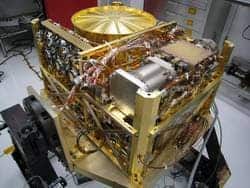NASA officials are flooded with media requests from journalists recently looking to find out exactly what all the fuss is all about. Oh, haven’t you heard? Well I’m getting ahead of myself. Well, apparently scientists onboard the Curiosity rover mission have come across data that’s right “for the history books.” A monumental find, nothing less, nothing more, but until this can be 100% confirmed, the scientists have their hands tied and lips sealed.
All we know for sure so far is that the rover’s Sample Analysis at Mars instrument, or SAM for short, has picked up some incredible measurements. For the past six weeks, the rover has been testing its soil-scooping gear at a site called “Rocknest,” where it analyzed multiple samples.
“We’re getting data from SAM as we sit here and speak, and the data looks really interesting,” John Grotzinger, the principal investigator for the rover mission, says during my visit last week to his office at NASA’s Jet Propulsion Laboratory in Pasadena, Calif. “The science team is busily chewing away on it as it comes down,” says Grotzinger.

Like a miniature chemistry lab, SAM can “sniff” out a sample and tell you its exact chemical composition. Obviously, something important came up, maybe even something organic. The $2.5 billion Curiosity rover landed nearby Mars’ huge Gale Crater on Aug. 5, kicking off a two-year mission whose goal is that of determining whether or not Mars is capable of sustaining microbial life. Only three months in the mission, Curiosity might have struck the winning ticket already. Again, I’m getting ahead of myself. It could be anything or it could very well be nothing. This is why the scientists are extremely cautions about what they release to the world. If they indeed found something monumental, then NASA might finally get back its fabled recognition and, hopefully, attract a budget increase. On the other hand, if this discovery is found to be a mere glitch or a contamination brought back from Earth, than the whole mission’s reputation might be put at risk.
After all, this wouldn’t be the first time an exciting measurement went wrong. A while ago, Curiosity picked up methane signatures in its instruments. Methane is very common on Earth, and its primary source is living organisms. After a double check, however, the reading was gone. Still, it won’t be for another couple of weeks until we know for certain what’s going on at the NASA/JPL mission control center.
ZME readers, what do you think Curiosity found on Mars?
Rumor first heard on NPR.


